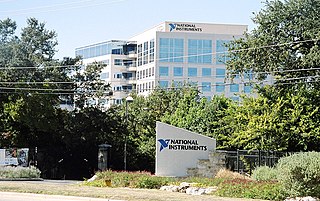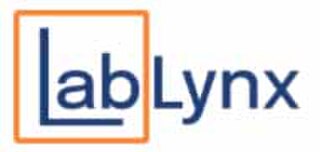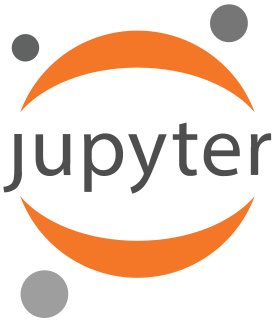Business Career
ALEC and Trade Service Corporation
In 1976, Beutler took a job as software development manager with Diversified Electronics (later DataTrak), a tech startup in Sunnyvale, CA that was the first company to manufacture construction estimating computers based originally on Monroe programmable calculators and later on the Digital Equipment Corp LSI-11 processor. These solutions were very expensive, and had to be customized for every customer. In 1980, Beutler started his first company, Construction Computer Consultants, which developed a Radio Shack TRS-80 Model I based electrical estimating solution named ALEC (Advanced Logic Estimating Computer) which was more powerful and far less expensive than competitors. In 1981, ALEC was acquired by Trade Service Corporation, publisher of pricing manuals for the electrical construction industry. There, Beutler developed the first computer-based pricing service (TraSer), and, along with John Musselman, developed the first standalone electronic tool for measuring and counting on blueprints. Know as QuickScaler (later acquired by Accubid), this product also interfaced to ALEC and other estimating computers.
In 1982, Beutler and his father, Ernest Beutler, formed Research Information Systems to develop software products and information tools to improve productivity for the scientific community. Their first product, Reference Manager [1] , was the world's first bibliographic management software. Prior to the development of Reference Manager, users were forced to organize their references on 3x5 cards and manually type bibliographies....and reformat them if there were any changes or if the article had to be resubmitted to a different journal.
Originally released for the CP/M operating system, it was quickly ported to the IBM PC when it emerged as the leading personal computer. The original version worked with WordStar, and later WordPerfect and Microsoft Word were supported.
In 1987, Beutler developed Reference Update, the first diskette-based current awareness service for the scientific community. At that time, PubMed (then know as Medline) was typically 3-6 months behind the actual publications, and keeping abreast of the literature involved browsing through printed journals or subscribing to a printed compendium such as Current Contents. The company selected over 1,000 leading biomedical journals, transcribed the table of contents (and later abstracts) and shipped them in highly compressed format on floppy disks. The subscription included specially tailored search software the enabled the user to execute search strategies and automatically transfer reference of interest into their Reference Manager database. Users could also download references in "RIS Format" which was developed by Beutler as a standard interchange format for bibliographic materials. In 1991, the company pioneered the use of modems and BitNet (a predecessor to the Internet) to transfer abstracts to users.
In 1992, Research Information Systems was acquired by the Thomson Corporation (now part of Clarivate)
GraphPad Software
In 1989, Beutler's friend Harvey Motulsky had developed curve fitting and plotting software known as GraphPad. Motulsky had asked Beutler to market his product under the Research Information Systems brand, but Beutler instead encouraged Motulsky to create his own company. After eventually agreeing, Beutler became the first investor in GraphPad and served on the Board until its acquisition by Insight Partners in 2017.
RefWorks
In 2000, Beutler and his colleagues from Research Information Systems, formed RefWorks in partnership with Cambridge Scientific Abstracts. RefWorks was the first web-based bibliographic management software, performing many of the functions of Reference Manager but allowed for better collaboration by virtue of being hosted on the Internet. Unlike earlier software products, RefWorks was an early successful SaaS product, and was sold to colleges and universities under a license which enabled the entire academic community to utilize the software. Over 1,000 colleges and universities around the world subscribed to RefWorks, with hundreds of thousands of users. Beutler served as CEO from 2007-2008 [2]
After CSA acquired ProQuest in 2007, ProQuest acquired the remainder of the company in 2008.
LabArchives
In 2009, along with CTO Kirk Schneider, Beutler founded LabArchives as the first web-based Electronic Laboratory Notebook (ELN) software [3] [4] . Offered as a Saas solution to individual researchers, LabArchives focused on providing site-wide licenses to academic institutions as well as private sector companies. LabArchives provided for easy storage of laboratory data, collaboration, and publishing, and included the unique feature of not allowing any data to be deleted. These functions help ensure data integrity which has been a growing problem in science.
In 2012, LabArchives also introduced a Classroom Edition of LabArchives which was tailored to the needs of instructors and students in laboratory courses [5] .
Also in 2012, LabArchives partnered with BioMedCentral, who support the open data movement, to examine science’s “dark data” by providing tools and incentives for authors to publish data along with their research articles. [6]
In 2015, Internet2 adopted LabArchives as the only recommended ELN for their membership [7]
In 2021, LabArchives was acquired by Insightful Science (now Dotmatics) [8]
Vision InfoSoft Corporation, Material Express, Invoice Connection and Scalex Corporation
Beutler also founded a number of other software and technology companies including Vision InfoSoft Corporation, MaterialExpress (a software system for pricing of construction materials), Invoice Connection, an automated billing service acquired by BillTrust [9] , and Scalex Corporation. With Vision InfoSoft, he was awarded a patent with his partners John Evans and Roger Jaccaud for developing a mechanism to use AI to locate invoice anomalies. [10]

Wang Laboratories was a computer company founded in 1951 by An Wang and G. Y. Chu. The company was successively headquartered in Cambridge, Massachusetts (1954–1963), Tewksbury, Massachusetts (1963–1976), and finally in Lowell, Massachusetts (1976–1997). At its peak in the 1980s, Wang Laboratories had annual revenues of $3 billion and employed over 33,000 people. It was one of the leading companies during the time of the Massachusetts Miracle.

Symyx Technologies, Inc. was a company that specialized in informatics and automation products. Symyx provided software solutions for scientific research, including Enterprise Laboratory Notebooks and products for combinatorial chemistry. The software part of the business became part of Accelrys, Inc. in 2010 and then in 2014 this company merged with Dassault Systèmes. Symyx also offered laboratory robotics systems for performing automated chemical research, which in 2010 was spun out as Freeslate, Inc.
Educational software is a term used for any computer software which is made for an educational purpose. It encompasses different ranges from language learning software to classroom management software to reference software. The purpose of all this software is to make some part of education more effective and efficient.

NI, formerly National Instruments Corporation, is an American multinational company with international operation. Headquartered in Austin, Texas, it is a producer of automated test equipment and virtual instrumentation software. Common applications include data acquisition, instrument control and machine vision.

A laboratory information management system (LIMS), sometimes referred to as a laboratory information system (LIS) or laboratory management system (LMS), is a software-based solution with features that support a modern laboratory's operations. Key features include—but are not limited to—workflow and data tracking support, flexible architecture, and data exchange interfaces, which fully "support its use in regulated environments". The features and uses of a LIMS have evolved over the years from simple sample tracking to an enterprise resource planning tool that manages multiple aspects of laboratory informatics.

Wolfram Research, Inc. is an American multinational company that creates computational technology. Wolfram's flagship product is the technical computing program Wolfram Mathematica, first released on June 23, 1988. Other products include WolframAlpha, Wolfram SystemModeler, Wolfram Workbench, gridMathematica, Wolfram Finance Platform, webMathematica, the Wolfram Cloud, and the Wolfram Programming Lab. Wolfram Research founder Stephen Wolfram is the CEO. The company is headquartered in Champaign, Illinois, United States.
An electronic lab notebook is a computer program designed to replace paper laboratory notebooks. Lab notebooks in general are used by scientists, engineers, and technicians to document research, experiments, and procedures performed in a laboratory. A lab notebook is often maintained to be a legal document and may be used in a court of law as evidence. Similar to an inventor's notebook, the lab notebook is also often referred to in patent prosecution and intellectual property litigation.
Reference Manager was the first commercial reference management software package sold by Thomson Reuters. It was the first commercial software of its kind, originally developed by Ernest Beutler and his son, Earl Beutler, in 1982 through their company Research Information Systems. Offered for the CP/M operating system, it was ported to DOS and then Microsoft Windows and later the Apple Macintosh. Research Information Systems was acquired by Thomson Business Information in 1994. Subsequently, Thomson acquired EndNote and ProCite, the other two leading bibliographic management programs. Rich Niles, founder of EndNote, joined Thomson Reuters as head of that division, and put all development focus on EndNote. Sales of Reference Manager continued until December 31, 2015 and support ended on December 31, 2016.
Laboratory informatics is the specialized application of information technology aimed at optimizing and extending laboratory operations. It encompasses data acquisition, instrument interfacing, laboratory networking, data processing, specialized data management systems, a laboratory information management system, scientific data management, and knowledge management. It has become more prevalent with the rise of other "informatics" disciplines such as bioinformatics, cheminformatics and health informatics. Several graduate programs are focused on some form of laboratory informatics, often with a clinical emphasis. A closely related - some consider subsuming - field is laboratory automation.
MDL Information Systems, Inc. was a provider of R&D informatics products for the life sciences and chemicals industries. The company was launched as a computer-aided drug design firm in January 1978 in Hayward, California. The company was acquired by Symyx Technologies, Inc. in 2007. Subsequently Accelrys merged with Symyx. The Accelrys name was retained for the combined company. In 2014 Accelrys was acquired by Dassault Systemes. The Accelrys business unit was renamed BIOVIA.
BIOVIA is a software company headquartered in the United States, with representation in Europe and Asia. It provides software for chemical, materials and bioscience research for the pharmaceutical, biotechnology, consumer packaged goods, aerospace, energy and chemical industries.
GraphPad Software Inc. was a privately held software development corporation until its acquisition by Insight Partners in 2017. The company was named Insightful Science, which itself merged with Dotmatics in 2021. The original software was written by Harvey Motulsky in 1989 and it was co-founded by Motulsky and Earl Beutler. The company operates in California. Its products include the 2D scientific graphing, biostatistics, curve fitting software GraphPad Prism and the free, web-based statistical calculation software, GraphPad QuickCalcs.
Collaborative Drug Discovery (CDD) is a software company founded in 2004 as a spin-out of Eli Lilly by Barry Bunin, PhD. CDD offers a web-based database solution for managing drug discovery data, primarily through the CDD Vault product which is focused around small molecules and associated bio-assay data. In 2021, CDD launched its first commercial data offering, BioHarmony, centered around drug information.

LabLynx, Inc. is a privately owned, funded, and managed American corporation that develops, supports, and markets laboratory information management system (LIMS) solutions. Its primary offerings over the years have included webLIMS and ELab. The company’s primary clients include laboratories in the agriculture, clinical, environmental, forensics, health care, and manufacturing industries, including government agencies. The company is known for introducing one of the first browser-based LIMS products in 1997 and being in the laboratory informatics industry for decades.
Dotmatics is an R&D scientific software company used by scientists in the R&D process that help them be more efficient in their efforts to innovate. Founded in 2005, the company's primary office is in Boston with 14 offices around the globe. In March 2021, Dotmatics joined forces with Insightful Science through a merger. In April 2022, the two companies consolidated under the Dotmatics brand. Dotmatics' software is used by 2 million scientists and researchers and 10,000 customers.

LabWare is a company that develops and implements Laboratory Information Management Systems (LIMS) and Electronic Laboratory Notebooks (ELN). The company is based in Wilmington, DE, and uses Smalltalk to develop both its LIMS and ELN.
The Event Driven Executive (EDX) is a computer operating system originally developed by IBM for the control of research laboratory devices and experiments. It included an application programming language known as EDL and HCF, a Host Communication Facility.
LabArchives is a line of cloud-based electronic lab notebooks (ELNs) sold by LabArchives, LLC, which was founded in 2009 by Earl B. Beutler and Kirk Schneider.

Project Jupyter is a project with goals to develop open-source software, open standards, and services for interactive computing across multiple programming languages. It was spun off from IPython in 2014 by Fernando Pérez and Brian Granger. Project Jupyter's name is a reference to the three core programming languages supported by Jupyter, which are Julia, Python and R. Its name and logo are an homage to Galileo's discovery of the moons of Jupiter, as documented in notebooks attributed to Galileo. Project Jupyter has developed and supported the interactive computing products Jupyter Notebook, JupyterHub, and JupyterLab. Jupyter is financially sponsored by NumFOCUS.






